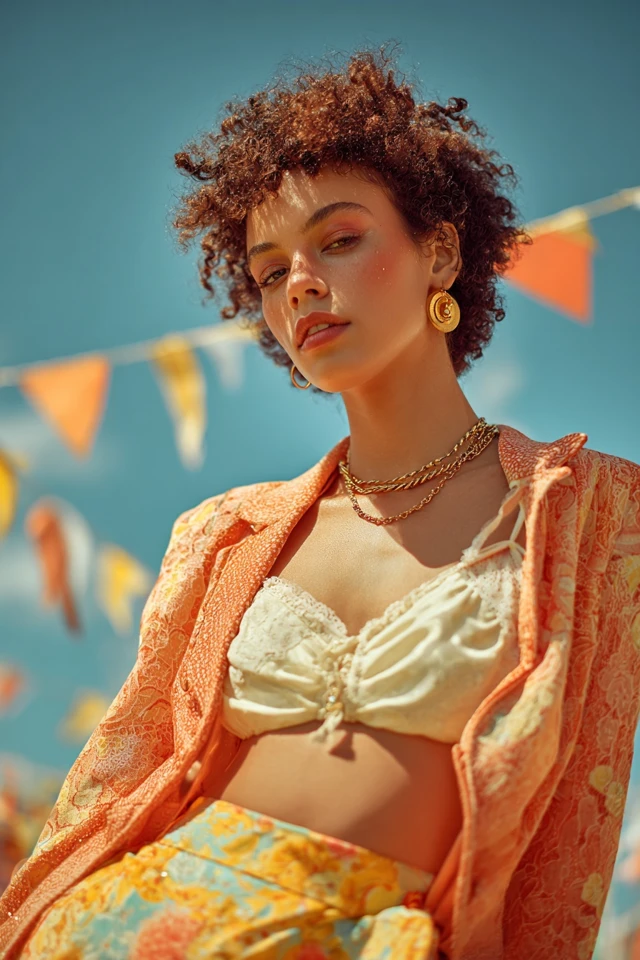Introduction
Last summer, I found myself sifting through a trunk of my grandmother’s vintage clothing, each fabric whispering stories not only of decades past but also of timeless elegance. As I ran my fingers over the delicate linens and cool cottons, I realized these textiles were more than just aesthetic choices—they were essential to the confidence and comfort that defined vintage summer style. This experience rekindled my passion for exploring how fabric choices shape our wardrobes and perceptions, especially during the warmer months.
Summer offers a unique sartorial challenge: How to stay cool, look polished, and feel confident under the sun’s scrutiny? Vintage summer fabrics possess qualities that modern fast fashion often overlooks—breathability, texture, and an inherent grace that impacts both wearer and observer. Understanding the nuances of these fabrics enriches not only your wardrobe but also your relationship with color, texture, and style.
About the Author and My Trend Boutique
In this post, I’ll guide you through a detailed exploration of vintage summer essential fabrics, weaving insights from fashion design, color psychology, and trend forecasting. Whether you’re a dedicated vintage lover or someone eager to refine your summer style, grasping the intimate dance between fabric and self-expression will elevate your dressing game. This topic matters because your clothing is more than fabric—it’s a language that speaks confidence, creativity, and care.
Foundational Concepts
Before diving into the specifics of fabric, it’s vital to understand three foundational concepts that inform not only vintage summer fashion but all sartorial choices: color psychology, trend forecasting, and dressing to impress.
Color Psychology
Color is one of the most powerful nonverbal cues in fashion. According to numerous studies in color psychology, our clothing colors can significantly impact mood, perception, and even behavior. For example, wearing cool shades like sky blue or soft green can evoke feelings of calmness and approachability, while warm colors such as coral or mustard inspire energy and creativity. As someone with advanced training in color psychology, I’ve found that incorporating these insights into fabric choices can transform not just how you look, but how you feel—and how others respond to you.
Trend Forecasting
While vintage fashion champions timelessness, understanding trend forecasting keeps you relevant. Professionals use a mix of cultural analysis, runway spotting, and consumer behavior to predict upcoming styles—colors, cuts, and materials alike. For vintage summer fabrics, this means recognizing which textures and silhouettes are resurging, and adapting them thoughtfully. This approach allows you to curate a wardrobe that feels classic yet fresh.
Dressing to Impress
Dressing to impress transcends superficiality; it’s a strategic form of self-expression that fosters confidence. This means choosing fabrics and colors that not only flatter your body and complexion but also align with the context of your day—whether casual brunch or a professional meeting. Understanding fabric behavior—how materials move, feel, and reflect light—is a crucial component, especially in summer heat.
Picture Gallery
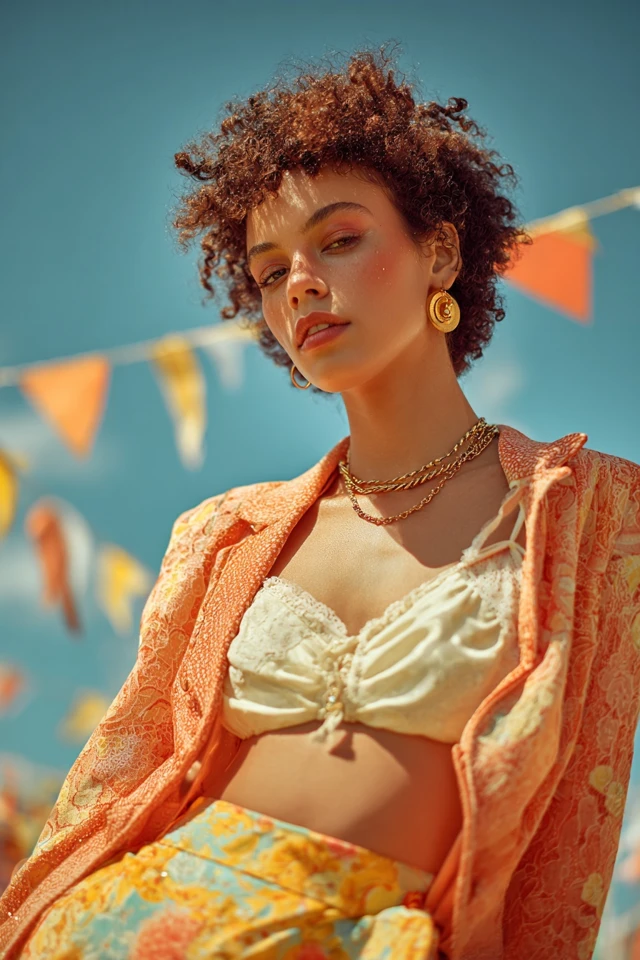
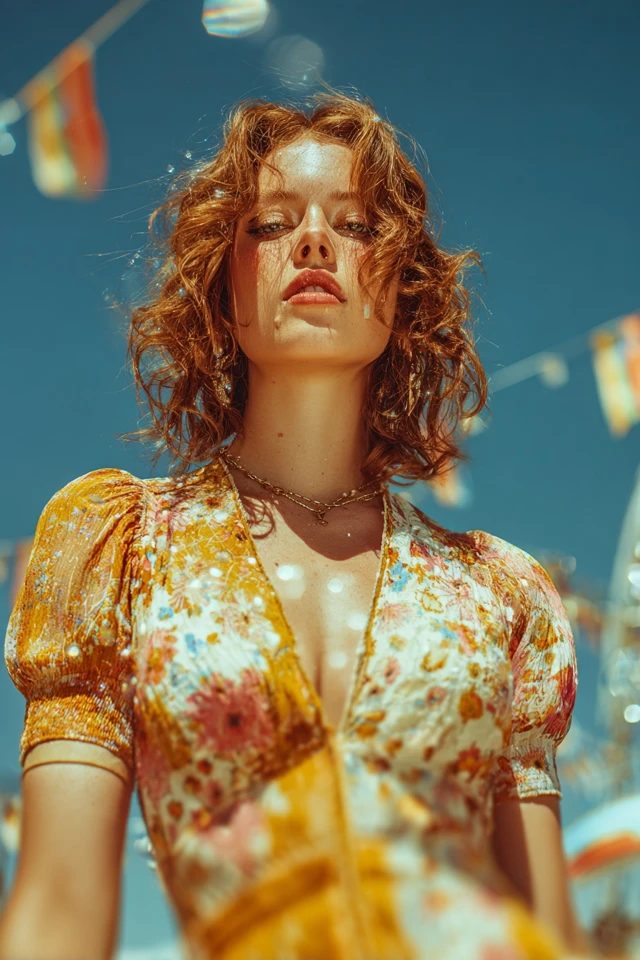
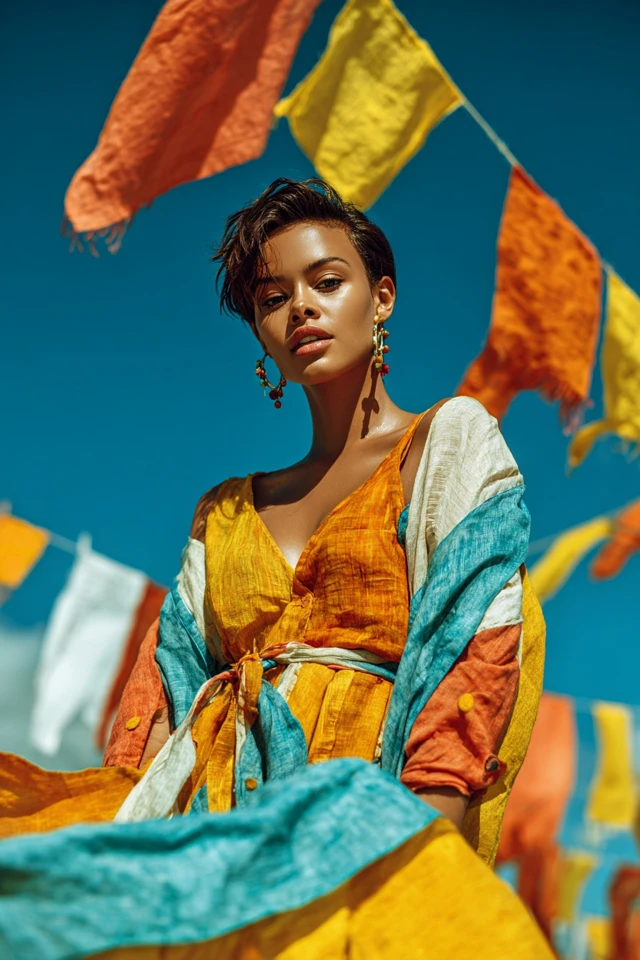
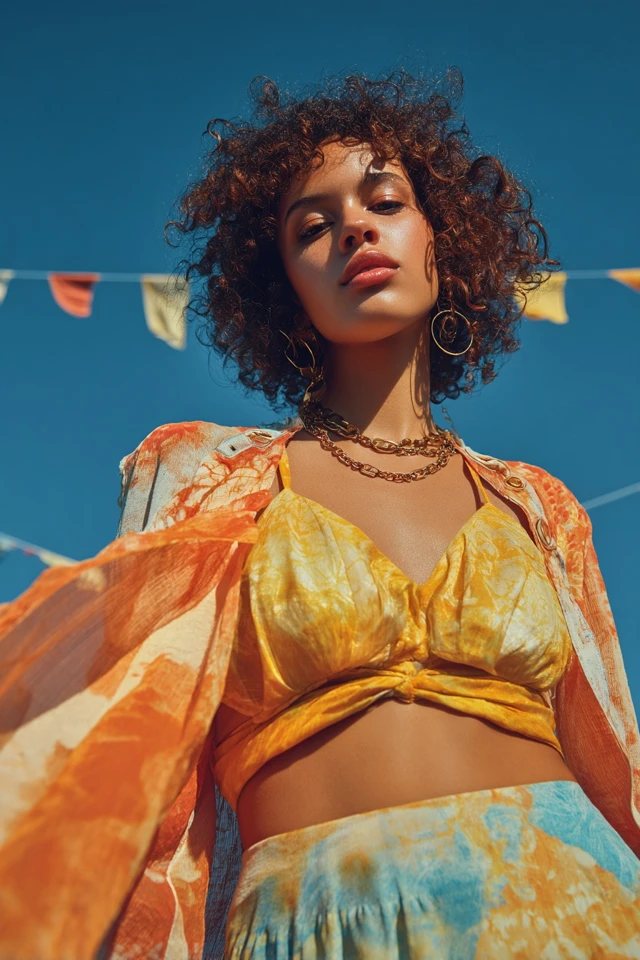
Color Psychology & Emotional Impact
Colors in vintage summer fabrics do more than decorate; they evoke emotions and influence perception. For instance, soft pastels like lavender and mint often have a soothing effect, ideal for summertime gatherings that call for relaxed but chic attire. Bold reds and deep teals, meanwhile, can signal confidence and vitality, making them perfect choices for making a strong impression.
The science of first impressions is clear: a well-chosen color can enhance perceived trustworthiness, confidence, and warmth. This is why understanding the emotional resonance of color is paramount in fashion. When paired thoughtfully with vintage fabric textures—such as breathable seersucker or airy cotton voile—these hues create outfits that feel both authentic and empowering.
Moreover, color interaction with natural light intensifies in summer, altering how shades appear and affect mood. For example, the shimmer in a vintage silk or the matte softness of linen can amplify color depth, subtly influencing how others perceive you in social or professional settings.
Personal Style & Body Type Considerations
Summer fashion isn’t one-size-fits-all. Recognizing your body type and personal style preferences is fundamental to selecting vintage fabrics that flatter and feel comfortable. Here are key considerations:
- Hourglass: Emphasize fitted yet breathable materials like lightweight cotton sateen or linen blends to showcase curves without overheating.
- Rectangle: Add volume with textured fabrics such as seersucker or eyelet lace, creating dimension and softness.
- Apple: Look for draping fabrics like wool crepe or chambray that skim over the midsection gracefully.
- Pear: Balance your silhouette with structured cotton poplin tops paired with flowy skirts in voile or gauze.
Complexion also plays a crucial role. Cooler skin tones shine in crisp whites and blues, while warmer tones glow in ivory, buttery yellows, and olive greens. Fabrics with subtle sheens, like vintage silk or satin, can amplify these effects, adding a natural radiance.
Quick Personal Style & Body-Type Quiz
- Do you prefer clothes that emphasize or soften your natural shape?
- Which fabrics make you feel most comfortable in warm weather?
- Are you drawn to bold colors or muted shades?
- Do you prefer structured silhouettes or flowing layers?
- How do your clothes currently impact your confidence?
Answering these questions helps tailor your vintage summer fabric choices to not only your body but your evolving self-expression.
Current Trends & Timeless Classics
In the evolving landscape of summer fashion, certain fabrics and colors reign supreme while others emerge as promising contenders. This season, lightweight linens, gauzy cottons, and textured seersucker are enjoying a well-deserved resurgence. They combine comfort with vintage charm—perfect for those scorching summer days.
On the color front, expect to see soft neutrals infused with earthy tones like terracotta and sage, as well as jewel tones such as emerald and sapphire softly woven into vintage-inspired garments. These colors resonate with current consumer desires for sustainability and authenticity.
Timeless classics remain steadfast: crisp white cotton, delicate lace trims, and pastel chambrays that pair easily with trend-led accessories. The secret to incorporating trends into vintage summer fabrics lies in balance—using trending colors with classic textures or pairing iconic silhouettes with unexpected hues.
Practical Tips & Recommendations
- Shopping Advice: Always check fabric content; natural fibers like cotton, linen, silk, and rayon are breathable and ideal for summer. Vintage stores and reputable online shops are treasure troves for such materials.
- Wardrobe Maintenance: Hand wash or use gentle cycles for vintage fabrics to preserve texture and color. Air drying prevents shrinkage and fabric stress.
- Layering: Layer lightweight pieces to play with textures—pair a cotton tank with a linen blazer or a chambray shirt over a lace dress for versatile looks.
- Accessories: Incorporate straw hats, leather sandals, and mother-of-pearl buttons to complement vintage fabric aesthetics without overwhelming them.
- Color Combos: Try pairing dusty rose with sage, sky blue with cream, or mustard yellow with navy to create refreshing and harmonious summer palettes.
These strategies honor both the integrity of vintage fabrics and contemporary styling sensibilities.
FAQs
- What is the best vintage fabric for hot summer days?
- Natural fibers such as cotton, linen, and rayon are best because they breathe well and wick moisture away, helping you stay cool and comfortable.
- How can I incorporate color psychology into choosing vintage summer outfits?
- Consider your emotional goals—choose calming colors like blue for tranquility or vibrant reds to feel energetic. Pair these shades with suitable vintage fabrics for maximum impact.
- Is vintage fabric care different from modern fabrics?
- Yes, vintage fabrics often require gentler care to avoid damage. Hand washing and air drying are generally preferred to extend garment life.
- How do I build a capsule wardrobe with vintage summer fabrics?
- Focus on versatile pieces in neutral colors, layering options in breathable textures, and a mix of timeless classics and subtle trend elements.
- Can I mix modern and vintage fabrics effectively?
- Absolutely. Combining modern cuts with vintage fabrics or vice versa can create unique, personalized looks that keep your style fresh and interesting.
Conclusion
Embracing vintage summer essential fabrics enriches your wardrobe with timeless comfort, style, and emotional depth. By understanding how fabric textures and colors influence confidence and perception, you empower yourself to dress not just to impress, but to express your truest self. Remember, fashion is an evolving journey—don’t hesitate to experiment with different fabrics, colors, and silhouettes to discover what resonates uniquely with you.
I invite you to share your own experiences with vintage summer fabrics in the comments below. Your stories and questions not only inspire others but help build a vibrant community of fashion lovers dedicated to thoughtful, joyful dressing. If you found this post helpful, please subscribe and share to continue receiving insightful style guidance grounded in both science and soul.

